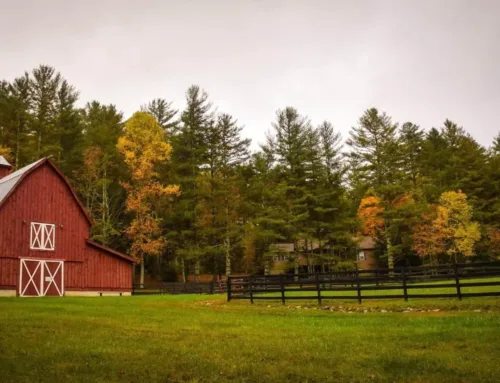Zoning laws are the necessary rules that dictate how we can and can’t use our property. They help minimize conflict between landowners and users by preventing things like putting a loud factory in a residential neighborhood. Zoning laws vary in every area and can cover building height, density, yard setbacks, and more.
There are several types of zoning to keep areas homogenous in their land use, such as residential, commercial, industrial, agricultural, rural, historical, and more. However, the needs of areas change over time which presents opportunities for landowners. What happens when there isn’t enough housing in a growing city? Or when residents don’t want to brave an hour of traffic to get to a grocery store?
Zoning changes over time to accommodate the needs of residents and provide better uses for the land. This article will review how to change zoning when there is an opportunity and some other considerations you should make.
Related: Zoning Issues: Can Zoning Improve The Housing Affordability?
How to Rezone Property
Rezoning property can be a long, challenging, and expensive process that doesn’t guarantee your desired outcome. Zoning laws are weighed carefully to determine the best use of land for the majority of people in the area in question. The regulatory bodies and populace in your area may not agree with your ideas for the best use of the land. It is important to know these facts before diving in, but rezoning a property can be highly profitable and beneficial to everyone in the area if the rezoning goes according to plan.
Every area is unique when it comes to zoning. Cities, towns, and counties each have their own specifics on land-use rules and procedures. There is no way to rezone a property without careful consideration and consultation with your area’s overseeing body, such as the municipal planning and building department. You may have to undergo several rounds of legislation, hearings, and meetings to gain approval to rezone your property. However, rezoning is often rewarded with better ways to use the land to its fullest potential. These steps are a general guide to getting your property rezoned, but be prepared to tackle any extra considerations in your area.
1) Survey your property and surrounding area
Do a general survey of your property and the surrounding land. You may be in a residential area with only houses and no shops. You could be in a mixed-use area with offices, shops, apartment buildings, and houses. Pay attention to how your area seems to be changing with the times. Is your city or town experiencing large-scale growth? Is it struggling to provide enough housing or shopping?
You will need to justify your desired changes to the governing body, and they will then begin to decide if your changes will benefit the area. Often highly populated cities will have the most barriers, as they need to carefully consider every inch that could provide for hundreds or thousands of people. If you want to change a commercial area in a densely populated city into a residential block, you will probably face many more challenges than a rural citizen wishing to use part of their land for agricultural purposes.
You will need a professional land survey to rezone. Millman National Land Services provides the easiest way to get a land survey anywhere you are — Schedule a survey today!
2) Do your research on the rules in your area
Learning the zoning rules in your area is critical to following the steps to rezoning in the most efficient way possible. Online research from your area’s government sites, reading the current zoning for your property, and opening a conversation with your local planning authority is the best way to get started.
3) Talk with your surrounding neighbors or landowners
They will have a say in your rezoning process. It is essential to talk with them and discuss your intentions with your property. Increased traffic, noise, and other new external factors on your land will affect them as well, and they won’t always be willing to go along with your changes. Take note if the opinion is overwhelmingly positive, negative, or neutral as this will greatly influence how officials will view your case. Most likely, there will be someone who doesn’t like the proposed changes, but their needs can often be overruled.
Related: How Zoning Laws Can Help Reduce Pollution
4) Application to rezone
Once you have a good idea of the current zoning rules and have done your due diligence, this is the time to open a rezoning application with your planning department. Meet with them to discuss what you want and start the paperwork process. Your planning authority will ask for a number of things to consider with the case, such as a land survey, maps, site plans, traffic studies, and more. You will also need to pay a sum that will range (depending on your area) from hundreds to thousands of dollars.
5) Planning Review
Your local planning department will review the materials that you have presented and make a recommendation to the higher legislative bodies. It is vital to be as kind, courteous, and helpful as possible throughout this entire process. Provide everything they need and revise your plans as necessary for the best chance of getting your desired results.
6) Meeting with the planning commission
Next, you will meet with the planning commission to go over any questions or concerns they may have with your request. Be sure you know that this will be a public meeting where your neighbors can come to air their grievances as well. You should answer any questions and address concerns in a friendly, professional, and informed manner. The goal is to gain a recommendation they will send to your area’s governing body.
7) Meeting with the governing body
You are almost to the finish line in getting your property rezoned. Your final step is taking your case to rezone before a legislative body in a public hearing before they vote. This is another opportunity for those who may be against you to be heard, so keep this in mind. You will have a chance to speak and address concerns, and then your case will be put to a vote. If they vote to allow your property to be rezoned, you can look forward to making the changes to your property. If they vote in the negative, you will need to wait a year or longer before trying again.
Need to bring in the big guns for your rezoning project? Millman connects you instantly with zoning professionals, environmental planners, attorneys, and more to ensure your rezoning or development process goes according to plan. Learn more here.
Now you know how to begin rezoning your property, you can get started today. Keep in mind that this process can take six months to a year to complete, so sooner is better than later!









